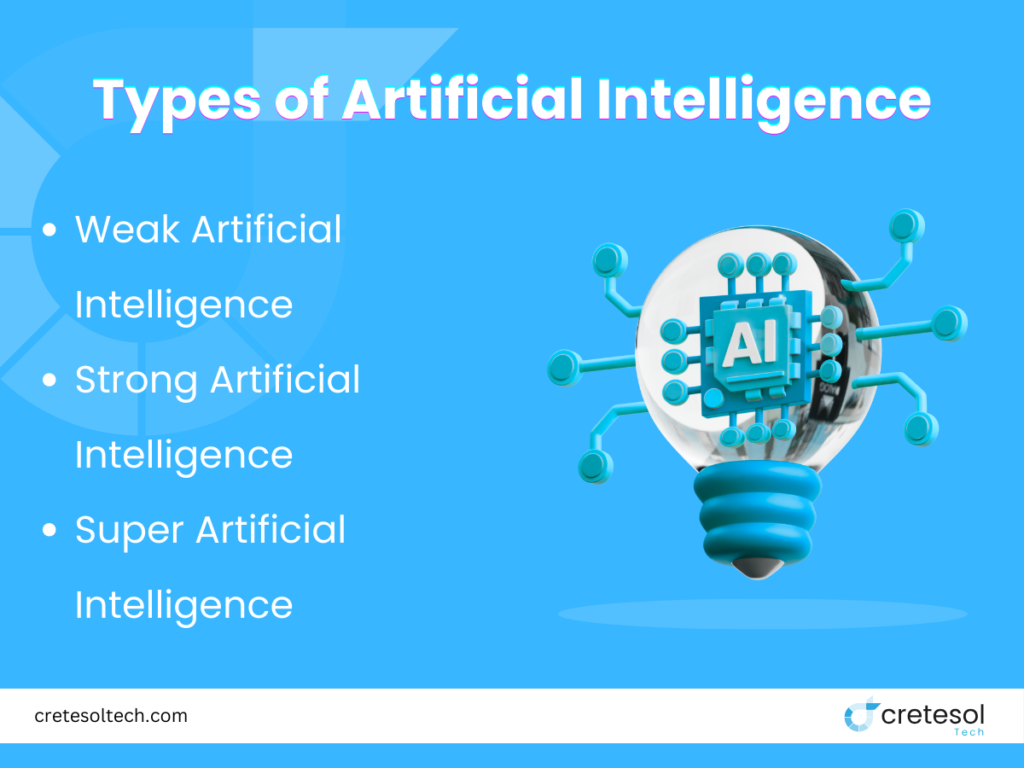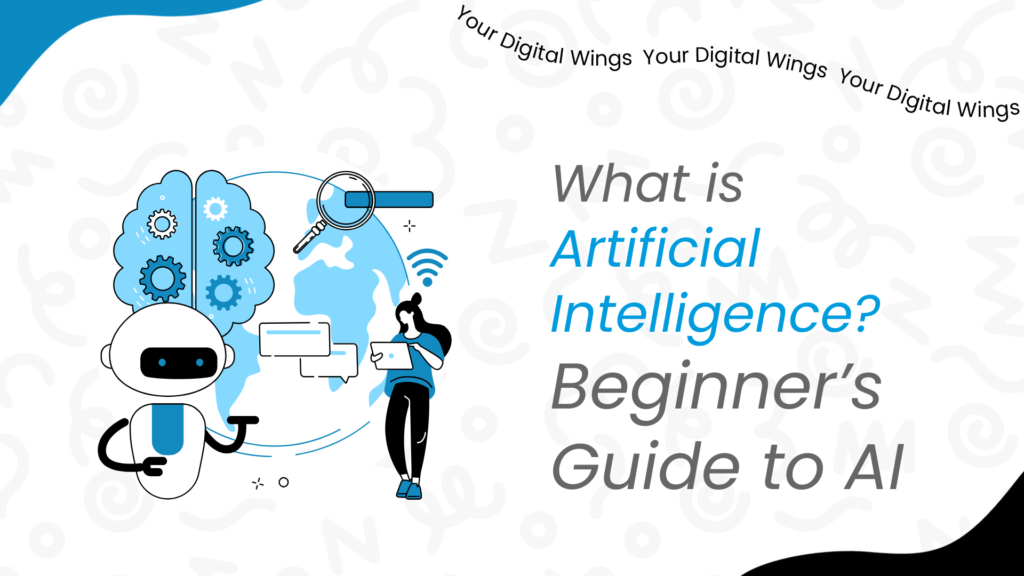Think about how you would use Netflix to get personalized show suggestions or inquire about the day’s weather using Alexa. Even though these are everyday tasks, they are made simpler because of the use of Artificial Intelligence.
But what is Artificial Intelligence? In its most basic form, Artificial Intelligence makes it possible for a machine to replicate human thought processes. This blog explains the basics of AI, the relevant technologies, and its influence on industry development.
What is Artificial Intelligence?
One definition of artificial intelligence is the study of creating technologies that are capable of doing tasks that need intelligence similar to that of humans. Some of these activities are learning, problem-solving, and making decisions.
For instance, AI assists in suggesting songs you may love on Spotify or makes it possible for self-driving cars to drive on the roads.
Types of Artificial Intelligence
Artificial intelligence is not a one-size-fits-all solution. Let’s explore different types of AI:

Narrow or Weak Artificial Intelligence
Narrow AI is intended for specialized applications.It can only do the functions for which it has been programmed. Netflix’s recommendation algorithms and voice assistants like Siri are two examples.
General or Strong Artificial Intelligence
Any intellectual task that a person is capable of can be completed by general artificial intelligence. It comprehends, picks up, and uses knowledge from a variety of fields. It is still theoretical, though, today.
Super Artificial Intelligence
Super artificial intelligence is smarter than humans. It is superior to humans in thinking, reasoning, and problem-solving. Although it has not yet been achieved, this degree of AI is being studied and discussed.
| Type | Description | Example |
| Narrow AI | Focused on a single task. This is where most AI nowadays fall. | Siri, facial recognition tools. |
| General AI | AI that behaves similarly to humans. Still in the research stage. | None yet—exists only in theory. |
| Super AI | AI is exceeding human intelligence. A debatable, futuristic concept. | Sci-fi scenarios like Her. |
How Does AI Work?
Consider the following three steps to understand how AI works:
Data Input: AI programs examine enormous text, picture, and numerical databases.
Algorithms: The data is processed by rules or models (such as machine learning).
Output: The system’s output includes forecasts or choices (e.g., spam filters banning emails).
Key Technologies Behind AI
AI makes wise decisions by utilizing data and advanced algorithms. These are the main technologies behind AI:
Machine Learning (ML)
Through machine learning, artificial intelligence can grow over time by learning from data. Without the need for explicit programming, it finds patterns in data to provide predictions.
Deep Learning
One type of machine learning called deep learning makes use of neural networks to simulate the human brain. Applications like speech translation and picture recognition are powered by it.
Natural Language Processing (NLP)
NLP makes it easier to process and comprehend human language by machines. Language translation software, chatbots, and virtual assistants all use it.
| AI Technology | Function |
| Machine Learning | makes predictions based on data |
| Deep Learning | resembles the way the brain of an individual works. |
| NLP | possesses an understanding of human language |
Impact of AI on Industries
AI is transforming a number of sectors. Let’s investigate how.
AI in Healthcare
- Increases the speed of disease diagnosis (e.g., spotting cancers in X-rays).
- Makes use of prior data to forecast patient risks.
AI in Business
- Automates repetitive operations (such as chatbots that handle consumer inquiries).
- Identifies patterns to increase sales (e.g., Amazon’s product listings).
Advantages & Disadvantages of Artificial Intelligence
| Advantages | Disadvantages |
| Uses automation to save time. | Job displacement in certain industries. |
| Minimizes human error. | Privacy issues with the use of data. |
| Improves accuracy in decision-making. | Danger of biased algorithms. |
| Lessens the need for human labor | High implementation expenses |
The Future of AI
The future of artificial intelligence has limitless possibilities:
Healthcare: AI-powered creation of medicines could speed up the recovery of diseases.
Climate: Natural calamities are predicted by AI models.
Ethics: More strict regulations to avoid bias and abuse.
Conclusion
Knowing what artificial intelligence is enables you to function in a technologically advanced environment. Without a doubt, AI is here to stay, regardless of its variety and use case. Adapting and progressing comes easier to you when you, as a student or professional thinker, know the basic concepts of artificial intelligence.
FAQ’s
AI has advantages and disadvantages. It increases productivity, streamlines processes, and facilitates better decision-making. But it also poses moral questions, may be abused, and could result in job displacement.
The first step for novices is to master the fundamentals of AI, machine learning, and deep learning. Online courses, tutorials, and AI tools like TensorFlow and Python are great starting points.
The technology known as AI allows robots to think, learn, and make decisions similarly to people.
Indeed, a lot of AI platforms and tools, such as TensorFlow, ChatGPT, and Google Colab, provide free access for learning and experimenting with AI.

 United Arab Emirates
United Arab Emirates